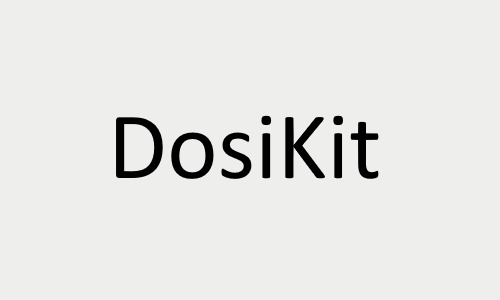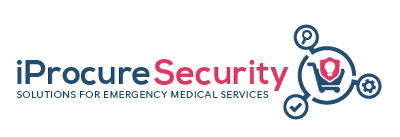76Projects
Help to improve our database
We are continuously collecting information related to the Emergency Medical Services in Europe. Help us improve our content and fill out the online form.
If you are not able to find what you are looking for, please let us know by sending us a message through our contact page.
Your feedback is important for us and it will be fed into our Database for EMS courses.
Open project form
DosiKit, a first portable field medical device for fast triage of people after external irradiation
- Funding: FP7
- From: 2019-08-01 to 2020-01-31
Description
There is currently a lack of irradiation biodosimetry tools that can be used in the event of nuclear accidents where individuals are exposed to potentially dangerous levels of radiation. There are also no devices that can be used by non-specialists in the field to give immediate results in cases of partial-body irradiation (PBI). The EU-funded DosiKit project has developed a device and a fast test that can identify and classify irradiated individuals in the field after nuclear accidents. The project hopes to make the device available in 2022 in Europe after some important regulatory and risk assessment studies.

FS-UNIT: Light-weight, portable medical Field Suction Unit to disrupt the pre-hospital market
- Funding: H2020
- From: 2019-05-01 to 2019-08-31
Description
Excitus is an award-winning high-tech health start-up set to disrupt the pre-hospital emergency care market by providing a lightweight, easy-to-use, instantly functioning portable medical suction device.
Sudden out-of-hospital cardiac arrests remain are highly lethal, with 9 out of 10 of the 350,000 EU cases ending in death. When a person’s heart stops, fast response is needed. Many times, fluid such as vomit clog up a person’s airway during a cardiac arrest, and so it is standard practice for ambulances to carry suction devices to clear airways. Prompt airway clearing can increase survivability in trauma cases by as much as 10%, yet current portable suction devices are not designed with a paramedic-centric view. Instead, they are heavy, bulky, difficult and time consuming to use, requiring both hands for operation and extensive cleaning afterwards. Resultantly, paramedics do not carry them to the scene at first response, thereby compromising the patients’ lives.

An electronic drone pilot and cargo custodian for blood and medical courier services
- Funding: H2020
- From: 2019-08-01 to 2019-11-30
Description
Up to now, helicopters and vehicles have been widely used to transport vaccines, medications and other emergency medical supplies. The use of drones is starting to take off, to address the limitations of traditional modes of transport. To boost the future use of drones in healthcare, the EU-funded ADRONE4LIFE is developing a smart device to improve safety in drone-based telemedicine systems. The device is flexible, modular and adaptable, guaranteeing and monitoring the condition of the medical drone’s cargo, be it blood bags or anti-venom serum. It will also be able to automatically control the drone’s flight path to ensure safe and timely arrival to the destination by avoiding harsh weather conditions.

ZENEO® Adrenaline Needle-free adrenaline pre-filled autoinjector rescues you from an anaphylactic shock
- Funding: H2020
- From: 2019-08-01 to 2019-11-30
Description
Anaphylactic shock is an extreme allergic reaction that needs to be treated immediately with a shot of epinephrine (adrenaline) to reverse the symptoms. Many people at risk of anaphylaxis carry an autoinjector – a combined syringe and concealed needle that injects a single dose of medication. This needle-based drug delivery device may soon be replaced by a needle-free alternative. Crossject’s ZENEO device permits needle-free injection of the drug in emergency situations. Under the EU-funded ZENEO project, the company plans to launch ZENEO® Adrenaline on the market by the end of 2021. It estimates a turnover of EUR 136 million and a profit of EUR 124 million by the fifth year of commercialisation.

A disruptive life-saving solution for early detection of lung edema in heart failure patients (EGM)
- Funding: FP7
- From: 2019-02-01 to 2019-05-31
Description
Heart failure (HF) is a major global cause of death, affecting over 26M people, and it represent the most common cause of hospitalisation for people over 65. Over 90% of hospitalisations and deaths in HF patients are caused by lung fluid congestion, a condition caused by the retention of fluids due to the reduced cardiac pumping ability, which can lead to severe pulmonary edema. Current diagnostic practices for detection of lung fluid congestion are mostly inaccurate, meaning that the condition can only be detected in its advanced stages when emergency hospitalisation is required. This results in a high rate of mortality (30% in the EU) and high treatment costs (€11,300 per person on average).
CardioSet introduces a non-invasive monitoring system, EGM, that detects lung fluid accumulation at an early and asymptomatic stage in HF patients

Development and commercialization of a semi-supervised learn (MrDoc)ing AI for robust diagnosis in real world settings.
- Funding: H2020
- From: 2019-08-01 to 2020-01-31
Description
The potential for artificial intelligence in healthcare is growing. When it comes to making medical diagnoses, computers may be just as successful as human physicians. The EU-funded MrDoc project has developed a semi-supervised learning AI platform that can analyse and interpret medical datasets. It has designed a process that mimics creative human imagination to quickly detect and diagnose some non-communicable diseases such as cardiovascular disease and diabetes, using biometric parameters (blood pressure, heart rate variability, haemoglobin, blood glucose) with a high level of accuracy. The project is preparing for market, to sell and licence its solution to three target groups: patients, developers of software and hardware tools (as well as Apps) and pharmaceutical companies.

EmergencyEye
- Funding: CIP
- From: 0001-01-01 to 0001-01-01
Description
EmergencyEye® provides the dispatcher with the opportunity for remote access to the bystander's smartphone infrastructure, generating live-video connection, providing precise geo-location and by 1.1.2020 initiating live chats with instant translation in a secure and reliable format. This will give dispatchers the ability to make more accurate diagnoses, coupled with clear and appropriate guidance, now even without language barriers. This interaction between dispatch centers and bystanders rests on cutting-edge technology which will provide the emergency professionals with full control over the flow of information.

Project Land|Rettung
- Funding: Other
- From: 0001-01-01 to 0001-01-01
Description
The number of emergency doctors deployed has increased significantly for several years. At the same time, there are fewer and fewer emergency doctors available in rural regions. In sparsely populated districts in particular, it is therefore becoming increasingly difficult to comply with the average help deadline of 10 minutes after the alarm is raised. Therefore, as part of the Land | Rescue project, innovations in emergency medical care in the Vorpommern-Greifswald district are being created and evaluated.
The concept of the project funded by the innovation fund of the Federal Joint Committee of Health Insurance Funds (GB-A) is based on four pillars:
- Strengthening the resuscitation skills of the population (lay resuscitation)
- Fast professional first aid through smartphone-based alerting of trained first aiders
- Introduction of the emergency doctor to shorten the therapy-free interval
- Improvement of the cooperation between the health insurance company and the ambulance service

On Time Emergency Response System
- Funding: H2020
- From: 2019-03-01 to 2019-06-30
Description
For Emergency Medical Services (EMS), late arrivals and long response times constitute losses in lives and higher hospitalization costs. 5 mins is the best response time to save more lives and 12 mins is the maximum threshold EMS estimate for an ambulance to be helpful. These times, however, are hard to meet (>50% emergencies do not even meet the latter). In EMS dispatch centers, operators must assess emergencies in real time, based on their best effort to decide which vehicle arrangement is the most adequate for each scenario. Speed is critical, so pre-positioning vehicles is the key to meet the required response time. The high complexity of the system produces uncertain demand and supply (incidents and vehicle availability), which gets worse due to traffic, incident severity, multiple/simultaneous incidents, and different types/sizes of ambulances and associated equipment.
SECONDS is an innovative, real-time vehicle management system for emergency dispatchers, maximizing coverage and reducing response time. It provides +35% ambulance arrivals below 12-min threshold time; it is able to manage simultaneous incidents in the same area; it forecasts locations with a higher emergency probability and provides predictive incident location, which means 25% less vehicle driving mileage, higher vehicle availability; faster patient delivery to hospital; less pollution. For EMS dispatch center operators, it will provide 2.5 faster response time, asset (vehicle + medical staff) usability management, reduced cost and crew overtime, as well as better decisions – less pressure on operators – and better monitoring. For citizens/persons in need, it will bring a higher survival rate (up to 14% mortality reduction) and richer experience – better care. SECONDS will bring our company international expansion, valuable IP assets, €24.6M profits over 5 years via subscriptions/consulting, a ROI of 844% and the creation of 59 additional qualified jobs.
Field of science

nExt generation eMergencY commuNicatiOnS (EMYNOS)
- Funding: FP7
- From: 2015-09-01 to 2018-02-28
Description
Current emergency systems and 112 services are based on legacy telecommunication technologies, which cannot cope with IP-based services that European citizens use every day. Some of the related limitations are the partial media support (so far, only voice calls and SMS are accepted), the lack of integration of social media, and the use of an analog modem for providing eCall services with limited data amount. As most operators have started migrating towards broadband IP-based infrastructures, current emergency systems need also to be upgraded/adapted in order to fulfill regulatory requirements in terms of Next Generation emergency services. Τhe main objective of EMYNOS project is the design and implementation of a Next Generation platform capable of accommodating rich-media emergency calls that combine voice, text, and video, thus constituting a powerful tool for coordinating communication among citizens, call centers and first responders.

